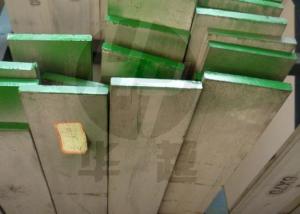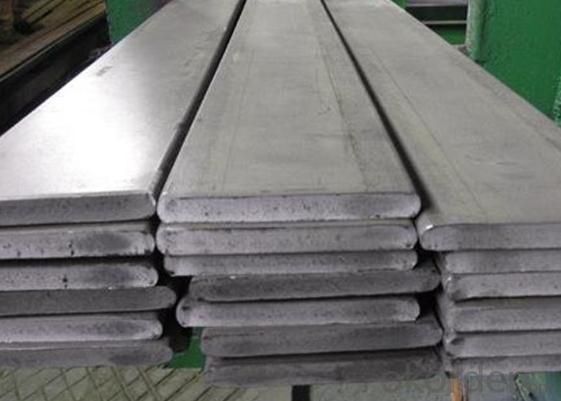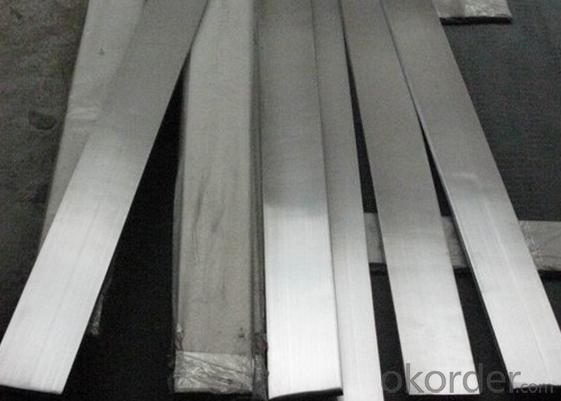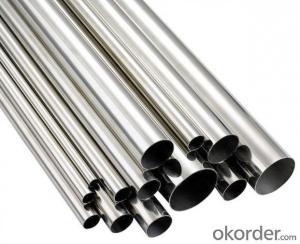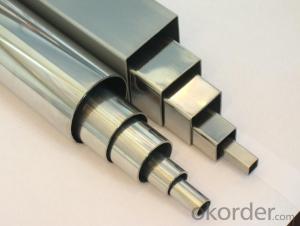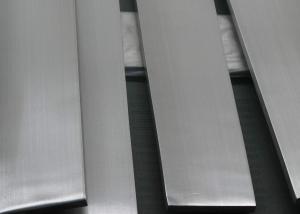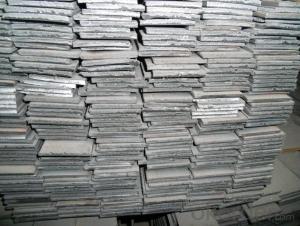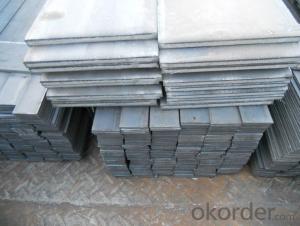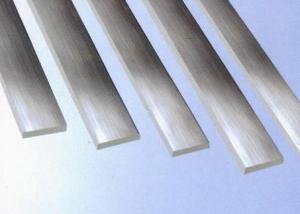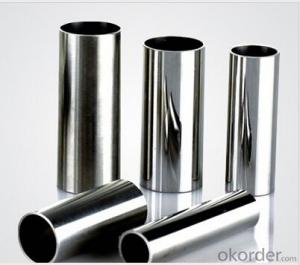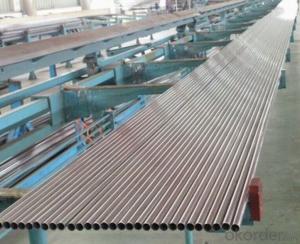Steel Flat Bar
- Loading Port:
- China Main Port
- Payment Terms:
- TT or LC
- Min Order Qty:
- 5 Tons m.t.
- Supply Capability:
- 1000 Tons Per Month m.t./month
OKorder Service Pledge
OKorder Financial Service
You Might Also Like
Stainless Steel Flats
1. Standard: AISI, GB, JIS, ASTM, DIN, EN
2. Grade: 1).200Series: 201,202.
2).300Series: 301,302,303,304,304L,316,316L,321.
3).400Series: 410,410S,416,420,430,430F.
3. Size:3x25mm- 80x250mm
4. Length: 2m-6m
5. Craft: HRAP, or cold drawn
6. Stainless Steel Flat Bar Surface: Pickling or polished
7. MOQ: 1 Ton
8. Delivery: within 20 days
9. Package: Waterproof with tape
10. Application: These products are widely supplied to areas of machine-made industry, chemical industry, shipping industry,architecture, food industry, household products etc.
|
Size |
Thickness (mm) | |||||||||||
|
Width (mm) |
3 |
4 |
5 |
6 |
8 |
10 |
12 |
14 |
16 |
20 |
25 |
30 |
|
Theoretical Weight (kg/m) | ||||||||||||
|
10 |
0.238 |
0.32 |
0.4 |
0.48 |
0.63 |
|
|
|
|
|
|
|
|
15 |
0.36 |
0.48 |
0.59 |
0.71 |
0.95 |
1.19 |
|
|
|
|
|
|
|
20 |
0.476 |
0.63 |
0.79 |
0.95 |
1.27 |
1.59 |
1.9 |
|
|
|
|
|
|
25 |
0.585 |
0.79 |
0.99 |
1.19 |
1.59 |
1.98 |
2.38 |
|
|
|
|
|
|
30 |
0.714 |
0.95 |
1.19 |
1.43 |
1.9 |
2.38 |
2.85 |
3.33 |
3.81 |
4.75 |
5.948 |
|
|
40 |
0.952 |
1.27 |
1.59 |
1.9 |
2.54 |
3.17 |
3.81 |
4.44 |
5.08 |
6.34 |
7.93 |
9.52 |
|
50 |
1.19 |
1.59 |
1.98 |
2.38 |
3.17 |
3.97 |
4.76 |
5.55 |
6.34 |
7.93 |
9.91 |
11.9 |
|
60 |
1.428 |
1.9 |
2.38 |
2.85 |
3.81 |
4.76 |
5.71 |
6.66 |
7.61 |
9.52 |
11.9 |
14.27 |
|
70 |
|
2.22 |
2.78 |
3.33 |
4.44 |
5.55 |
6.66 |
7.77 |
8.88 |
11.1 |
13.88 |
16.65 |
|
80 |
|
|
3.17 |
3.81 |
5.08 |
6.34 |
7.61 |
8.88 |
10.15 |
12.69 |
15.86 |
19.03 |
|
90 |
|
|
3.57 |
4.28 |
5.71 |
7.14 |
8.56 |
9.99 |
11.42 |
14.27 |
17.84 |
21.41 |
|
100 |
|
|
3.97 |
4.76 |
6.34 |
7.93 |
9.52 |
11.1 |
12.69 |
15.86 |
19.82 |
23.79 |
|
110 |
|
|
|
5.23 |
6.98 |
8.72 |
10.47 |
12.21 |
13.96 |
17.45 |
21.81 |
26.17 |
|
120 |
|
|
|
5.71 |
7.61 |
9.52 |
11.42 |
13.32 |
15.23 |
19.03 |
23.79 |
28.55 |
|
130 |
|
|
|
6.19 |
8.25 |
10.31 |
12.37 |
14.43 |
16.49 |
20.62 |
25.77 |
30.93 |
|
140 |
|
|
|
6.66 |
8.88 |
11.1 |
13.32 |
15.54 |
17.76 |
22.2 |
27.76 |
33.31 |
|
150 |
|
|
|
7.14 |
9.52 |
11.9 |
14.27 |
16.65 |
19.03 |
23.79 |
29.74 |
35.69 |
|
160 |
|
|
|
7.61 |
|
12.69 |
15.23 |
17.76 |
20.3 |
25.38 |
31.72 |
38.06 |
|
170 |
|
|
|
|
|
13.48 |
16.18 |
18.87 |
21.57 |
26.96 |
33.7 |
40.44 |
|
180 |
|
|
|
|
|
14.27 |
17.13 |
19.98 |
22.84 |
28.55 |
35.69 |
42.82 |
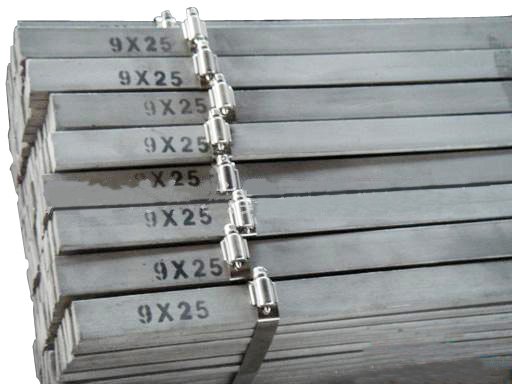
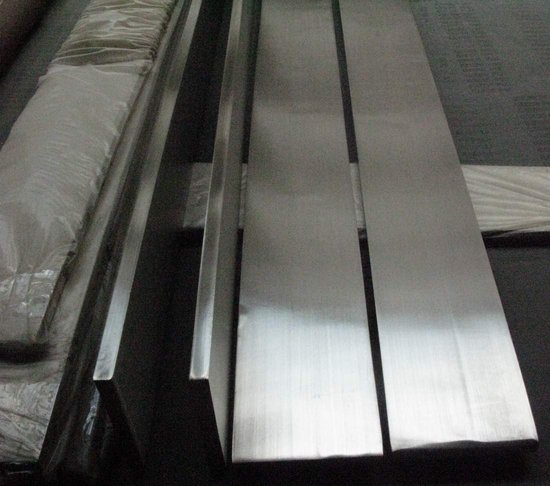
- Q: Are stainless steel pipes suitable for high-temperature environments?
- Indeed, high-temperature environments are well-suited for stainless steel pipes. Renowned for their remarkable resistance to heat, stainless steel pipes are highly favored for applications in such conditions. They have the ability to endure a broad range of temperatures, from freezing to exceedingly high levels, all while maintaining their mechanical integrity. Consequently, stainless steel pipes prove to be the perfect choice for industries like oil and gas, chemical processing, and power generation, where elevated temperatures prevail. Furthermore, the exceptional corrosion resistance possessed by stainless steel pipes further augments their appropriateness for high-temperature settings.
- Q: What is the difference between stainless steel pipes and carbon steel pipes?
- The main difference between stainless steel pipes and carbon steel pipes lies in their composition. Stainless steel pipes contain a higher percentage of chromium, which provides excellent resistance to corrosion and oxidation. On the other hand, carbon steel pipes have a higher carbon content, making them stronger and more durable. Stainless steel pipes are commonly used in applications where corrosion resistance is crucial, such as in the food and chemical industries, while carbon steel pipes are often used for high-pressure and high-temperature applications, such as in oil and gas pipelines.
- Q: Mirror stainless steel tube 60*60 how much is one meter?
- Stainless steel tube square weight formula: (pipe circumference / 3.14- actual thickness) * actual thickness *0.02491* length, 0.02491 of which is converted by the stainless steel density of a constant.
- Q: How long do stainless steel pipes last?
- Stainless steel pipes are renowned for their durability and long-lasting nature, making them a favored option in a variety of industries and applications. The lifespan of stainless steel pipes can differ depending on various factors, including the quality of the stainless steel used, the installation environment, and the maintenance procedures followed. In general, stainless steel pipes boast an impressive lifespan and can endure for numerous decades. In some cases, with adequate care and maintenance, they can even surpass the century mark. This is attributed to the inherent qualities of stainless steel, such as its resistance to corrosion, high strength, and ability to withstand high temperatures. One of the primary reasons behind the prolonged lifespan of stainless steel pipes is their ability to resist corrosion. Stainless steel contains a minimum of 10.5% chromium, which forms a passive oxide layer on the surface when it comes into contact with oxygen. This oxide layer acts as a protective barrier, preventing further corrosion and ensuring the pipes' longevity. Moreover, stainless steel pipes can endure extreme temperatures, making them suitable for a wide range of applications. They possess excellent heat resistance, enabling them to maintain their structural integrity even under high temperatures. This characteristic contributes to their extended lifespan, as they can withstand thermal stress without deteriorating. Furthermore, the quality of stainless steel utilized in the manufacturing process plays a pivotal role in determining the pipes' lifespan. Higher grades of stainless steel, such as 316 or 304, exhibit greater resistance to corrosion and possess superior mechanical properties. Investing in high-quality stainless steel pipes can significantly extend their lifespan. Lastly, proper maintenance and regular inspections are vital for maximizing the lifespan of stainless steel pipes. Routine inspections aid in identifying any signs of corrosion, damage, or other issues before they escalate and create significant problems. Regular cleaning and maintenance practices, such as the removal of debris or scaling, also contribute to prolonging the pipes' lifespan. In conclusion, stainless steel pipes possess an exceptional lifespan and can endure for numerous decades or even surpass a century. Their resistance to corrosion, high strength, heat resistance, and adherence to proper maintenance practices all contribute to their prolonged lifespan. When considering stainless steel pipes for a specific application, it is crucial to select the appropriate grade and ensure proper care and maintenance to maximize their longevity.
- Q: How do stainless steel pipes compare to ductile iron pipes?
- When comparing stainless steel pipes to ductile iron pipes, there are several factors to consider. Firstly, stainless steel pipes have a higher resistance to corrosion compared to ductile iron pipes. This is due to the presence of chromium in stainless steel, which forms a protective layer on the surface of the pipe, preventing rust and corrosion. Ductile iron, on the other hand, is more prone to corrosion and may require additional coatings or linings to protect against it. Secondly, stainless steel pipes have a higher strength-to-weight ratio than ductile iron pipes. This means that stainless steel pipes can withstand higher pressure and have a longer lifespan, making them more durable and reliable. Ductile iron pipes are also strong, but they are generally heavier, which can make installation more challenging. Another important factor to consider is the cost. Stainless steel pipes tend to be more expensive than ductile iron pipes, primarily due to the higher cost of raw materials and manufacturing processes. However, the longer lifespan and lower maintenance requirements of stainless steel pipes can offset this initial cost, making them a cost-effective choice in the long run. In terms of versatility, stainless steel pipes offer more flexibility in terms of design and application. They can be easily welded, bent, and fabricated to meet specific requirements. Ductile iron pipes, on the other hand, have limited flexibility and are typically used for underground water and sewage systems. Overall, both stainless steel and ductile iron pipes have their own advantages and disadvantages. The choice between them will depend on factors such as the specific application, budget, and desired lifespan.
- Q: What is the difference between 410 and 416 stainless steel pipes?
- The chemical composition and intended use differ between 410 and 416 stainless steel pipes. 410 stainless steel, which contains a higher carbon content compared to 416 stainless steel, is a versatile stainless steel. This increased carbon content provides 410 stainless steel with greater strength and hardness, making it suitable for applications that require strong mechanical properties. It also exhibits good corrosion resistance in mild environments and can be hardened through heat treatment. Industries such as automotive, construction, and manufacturing commonly utilize 410 stainless steel pipes. On the contrary, 416 stainless steel is a stainless steel that is specifically designed for easy machining. It contains sulfur, which enhances its machinability. However, this sulfur content decreases its corrosion resistance in comparison to 410 stainless steel. Although 416 stainless steel offers lower strength and hardness than 410 stainless steel, it excels in machinability, making it perfect for applications that involve intricate or complex machining operations. Gears, bolts, and nuts are examples of common applications for 416 stainless steel. To summarize, the primary distinction between 410 and 416 stainless steel pipes lies in their carbon content and sulfur addition, which impact their mechanical properties and machinability. The choice between these two types will depend on the specific requirements of the application, including strength, hardness, corrosion resistance, and machinability.
- Q: What are the limitations of using stainless steel pipes?
- The utilization of stainless steel pipes is associated with several limitations. To begin with, stainless steel pipes are inclined to be pricier in comparison to materials like PVC or copper. This aspect can render them less viable for projects with financial constraints. Moreover, the installation of stainless steel pipes can be more challenging and necessitate the use of specialized tools and equipment. Consequently, this can lead to an increase in both the overall installation time and cost. Another constraint is that stainless steel pipes are unsuitable for the transportation of certain corrosive chemicals or gases. There is a possibility of a chemical reaction occurring with certain substances, resulting in corrosion and potential harm to the pipes. In such scenarios, alternative materials such as plastic or lined pipes may be more suitable. Additionally, stainless steel pipes may possess limitations in terms of their resistance to temperature and pressure. Although they can withstand relatively high temperatures and pressures, extreme conditions may require the utilization of more robust materials. Furthermore, stainless steel pipes exhibit lower thermal conductivity compared to other materials, implying that they are not as efficient in transferring heat. This can be a limitation in certain heating or cooling applications that require rapid heat transfer. Lastly, stainless steel pipes are susceptible to expansion and contraction with changes in temperature. Consequently, the use of expansion joints or other measures may be necessary to accommodate these movements and avoid potential damage. In conclusion, although stainless steel pipes offer numerous advantages such as durability and resistance to corrosion, it is crucial to carefully consider their limitations before selecting them for a specific project.
- Q: Are stainless steel pipes resistant to chemicals?
- Yes, stainless steel pipes are generally resistant to chemicals. Stainless steel is known for its corrosion resistance properties, which makes it an ideal material for various applications, including pipes that are exposed to different chemicals. The high levels of chromium in stainless steel create a protective layer on the surface of the material, preventing it from reacting with most chemicals and corrosive substances. However, it is important to note that the resistance of stainless steel pipes to chemicals can vary depending on the specific type and grade of stainless steel used. In some cases, certain aggressive chemicals or extreme conditions may still cause corrosion or damage to stainless steel pipes, so it is always advisable to consult with experts or refer to specific chemical resistance charts for accurate information on the compatibility of stainless steel pipes with different chemicals.
- Q: What is the external coating used for stainless steel pipes?
- The external coating used for stainless steel pipes can vary, but common options include epoxy, polyethylene, or polypropylene coatings.
- Q: What is the lifespan of stainless steel pipes?
- The lifespan of stainless steel pipes can vary depending on various factors such as the grade of stainless steel used, the environment in which they are installed, and the maintenance practices followed. However, in general, stainless steel pipes have a long lifespan and can last for several decades or even longer with proper care and maintenance.
1. Manufacturer Overview
| Location | Jiangsu,China |
| Year Established | 2002 |
| Annual Output Value | Above US$ 8 Million |
| Main Markets | China, East Asia, |
| Company Certifications | ISO9001:2000; |
2. Manufacturer Certificates
| a) Certification Name | |
| Range | |
| Reference | |
| Validity Period |
3. Manufacturer Capability
| a) Trade Capacity | |
| Nearest Port | Shanghai |
| Export Percentage | 40% |
| No.of Employees in Trade Department | 30 People |
| Language Spoken: | English;Chinese |
| b) Factory Information | |
| Factory Size: | Above 26,000 square meters |
| No. of Production Lines | Above 6 |
| Contract Manufacturing | OEM Service Offered;Design Service Offered |
| Product Price Range | Average |
Send your message to us
Steel Flat Bar
- Loading Port:
- China Main Port
- Payment Terms:
- TT or LC
- Min Order Qty:
- 5 Tons m.t.
- Supply Capability:
- 1000 Tons Per Month m.t./month
OKorder Service Pledge
OKorder Financial Service
Similar products
Hot products
Hot Searches
Related keywords

